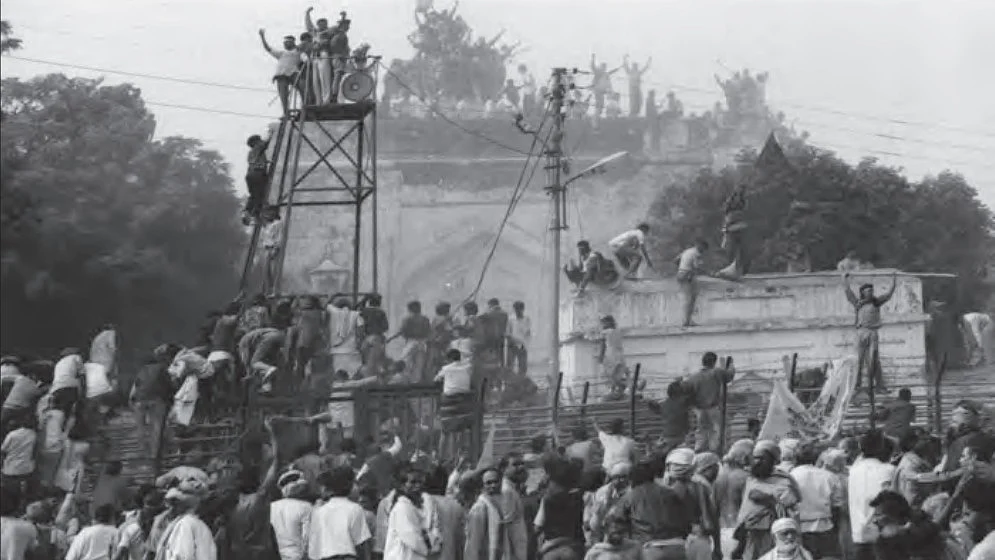Digging our own civilisational grave
All citizens who wish the country well can only hope that the Supreme Court will uphold the Places of Worship Act, 1991

“जिधर देखो, उधर खुदा है
जहाँ नहीं है वहाँ भी खुद जाएगा”
The gag, in its Hindi original, got around a fair bit during Delhi’s metro construction drive. Today, it feels like the whole nation has become a victim of the joke. At a remove from the originally intended sense of ‘khuda’ (dug up), the lines are now being read in the other sense (khuda or the Almighty):
“God is everywhere, wherever you dig
And where He isn’t, He will be found.”
Anywhere you look, something is being dug up or is about to be or loud demands are being made to allow another dig. Buried skeletons and grudges are being disinterred from the recesses of history, and where discovery falls short, inventions are filling the gap.
The madness was initially confined to Ayodhya’s Babri Masjid. Then we were told that Ayodhya was just the beginning, and soon, the focus shifted to Kashi’s Gyanvapi mosque and Mathura’s Shahi Eidgah. Now, it seems a floodgate has opened—from the Jama Masjid in Sambhal to the Kamal Maula mosque in Dhar (Madhya Pradesh), Baba Budangiri dargah in Chikmagalur, Haji Malang dargah in Thane and even the Ajmer Sharif dargah.
Excavatory surveys are being conducted at more than a dozen sites, and their furrows are marked deep inside people’s hearts and minds. Mosques are being found and shut down in colleges; community prayers are being halted on roads; and even solitary acts of worship give offence. The news from Moradabad is that a Muslim doctor couple was prevented from living in a flat they had legally bought in a housing society. A communal frenzy, initiated at the top, is now roiling the common people.
Consider for a moment the irony of bemoaning the plight of minority Hindus in neighbouring Bangladesh while cheerleading the campaign to target Muslims here in India; of applauding lynchings and bulldozer action against minorities here while making heroes of people who stand for the rights of Hindu minorities there. If another nation comments on the status of minorities in India, we condemn it as an attack on our sovereignty, but we don’t hesitate to issue statements on the treatment of minorities in Bangladesh.
BJP leaders have even demanded taking the matter to the United Nations. If this isn’t hypocrisy, what is? Shouldn’t we pause and think? Where is this leading us? How far and wide shall we dig? Can we confront the full truth of what we unearth? Can we foresee the long-term consequences of indulging our whims today? Think about it: how many religious sites might have been upturned/ destroyed in this geography in the past 5,000 years?
How much mayhem perpetrated by how many rulers? If we insist on settling all those accounts, what won’t we have to excavate? Today we recall only the stories of Muslim rulers destroying Hindu temples because those are the ones deliberately being amplified. But in earlier eras, and even during those times, didn’t Hindu rulers destroy temples built by other Hindu kings? Didn’t rulers of one dynasty or sect destroy the idols of another? Are we prepared to reckon with all that?
Historians reveal that Pushyamitra Shunga, the Brahmin king of the Shunga dynasty, destroyed countless Buddhist and Jain sites across the land. Even in the medieval period, Maratha forces demolished the temple at Srirangapatna.
During the Partition riots, temples and gurdwaras were destroyed on the other side of the border, just as countless mosques were razed on this side. According to historian D.N. Jha, the Bhooteswar and Gokarneshwar temples were once possibly Buddhist monasteries. Even Swami Vivekananda noted that the Jagannath temple in Puri was originally a Buddhist shrine. Today, Jains may not make claims on those sites and Buddhists may not be in a place where they can demand them back, but who can guarantee this won’t happen in the future?
The balance of power may favour one side today, but who can predict what will happen a hundred years from now? If we set a precedent of avenging historical wrongs and reclaiming religious sites, who will remain untouched? In this excavation frenzy, whether temples, mosques, gurdwaras or viharas are found or not, India’s foundation will certainly be shaken. And neither will survive— not faith nor the nation.
The only way to escape this madness is for all Indians to draw a line and agree that all historical disputes prior to a certain date are permanently sealed. That date can only be 15 August 1947—the day we embarked on our journey as an independent nation. This was precisely the intent of the Places of Worship Act, 1991. Excluding the disputed Babri Masjid–Ram Janmabhoomi site, all other religious sites in the country, the 1991 law declared, would remain as they were on 15 August 1947; no court was allowed to reopen a dispute from an earlier date.
This law held firm for 33 years, and even in the Ayodhya verdict of 2019, authored by the just-retired Chief Justice of India D.Y. Chandrachud, the Supreme Court upheld the act. Yet strangely, while hearing the Gyanvapi case, Chandrachud made an oral observation that even if the 1991 Act barred revisiting old disputes, it was okay to conduct surveys—a most lamentable utterance that has unleashed a deluge of new petitions for surveys and controversies across the nation.
A bench headed by CJI Sanjiv Khanna that heard the matter on 12 December has given some hope. All citizens who wish the country well can only hope that the court will uphold the 1991 law and put an end to this frenzy.
Follow us on: Facebook, Twitter, Google News, Instagram
Join our official telegram channel (@nationalherald) and stay updated with the latest headlines
